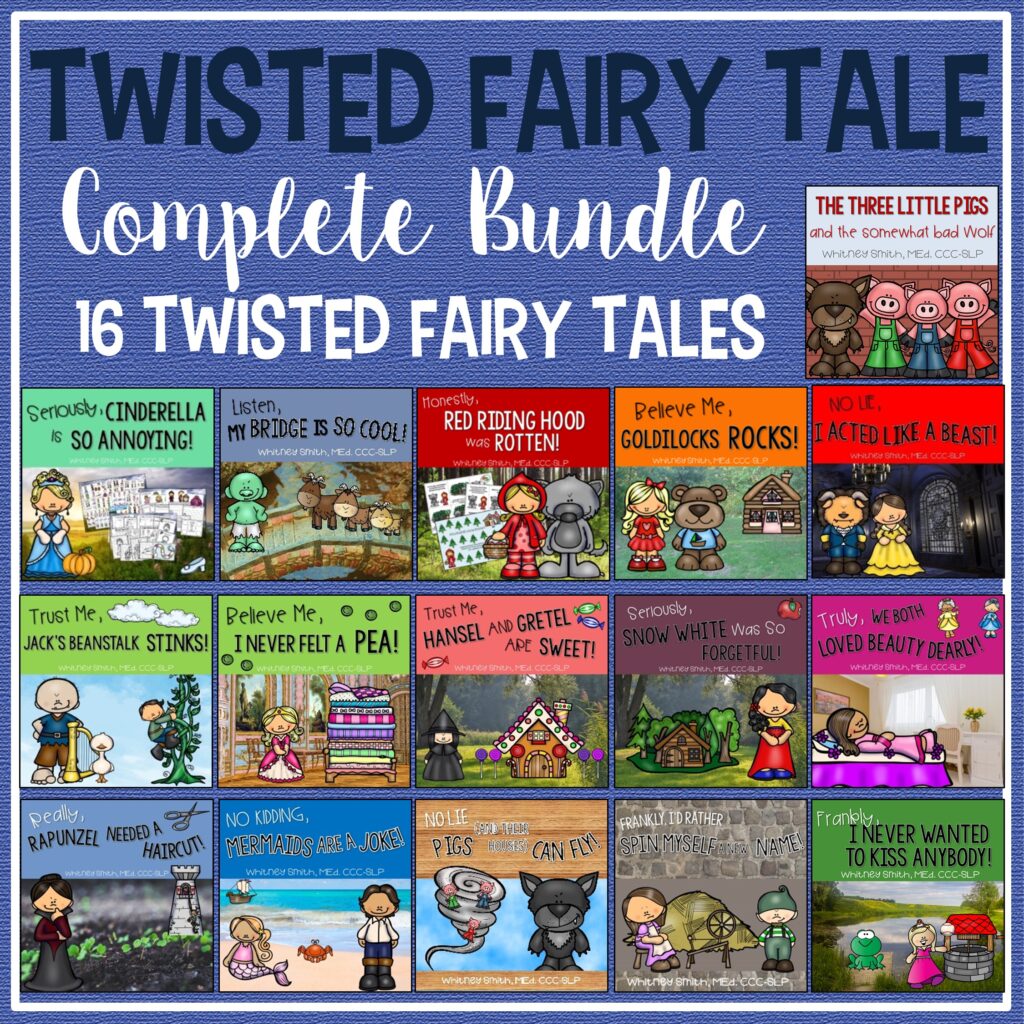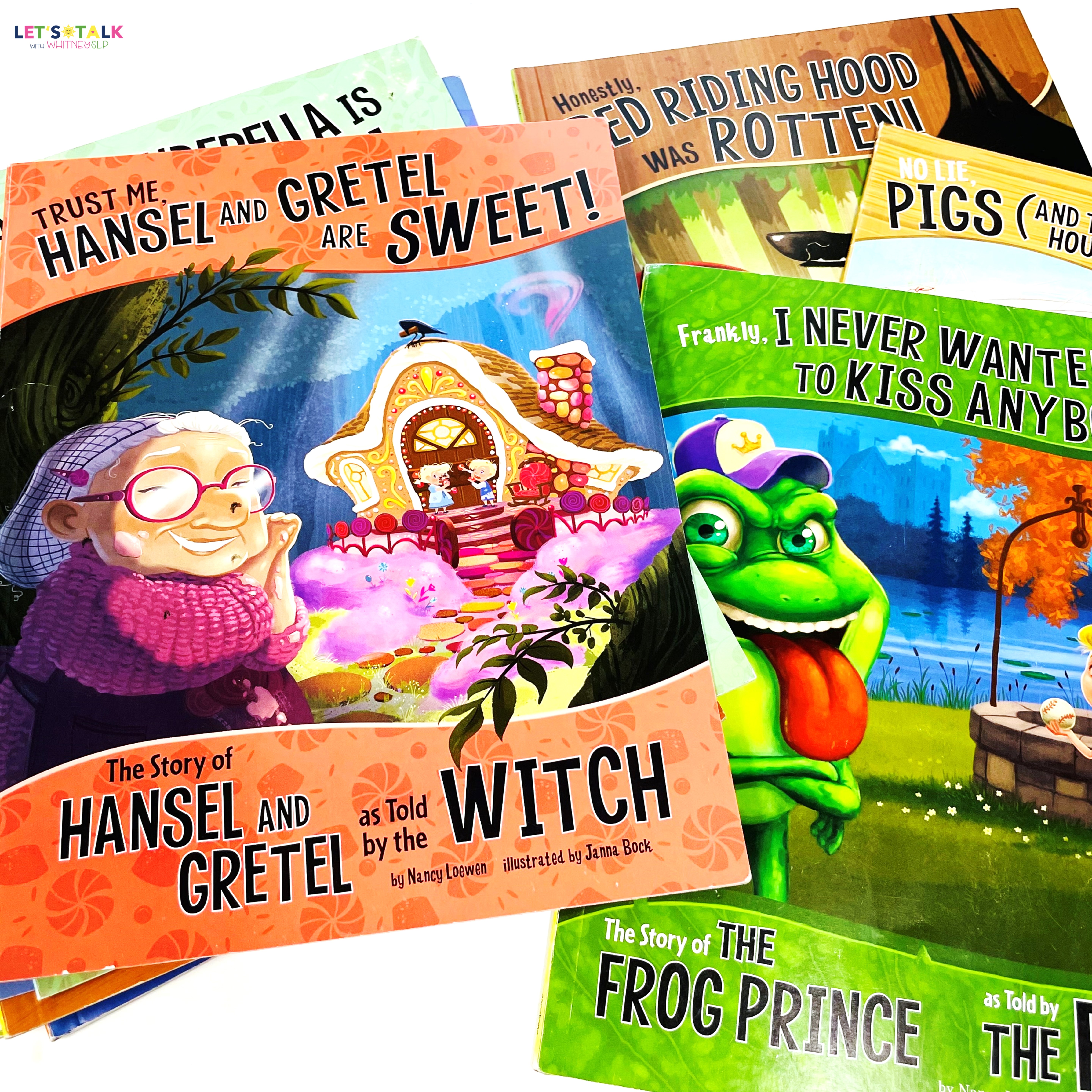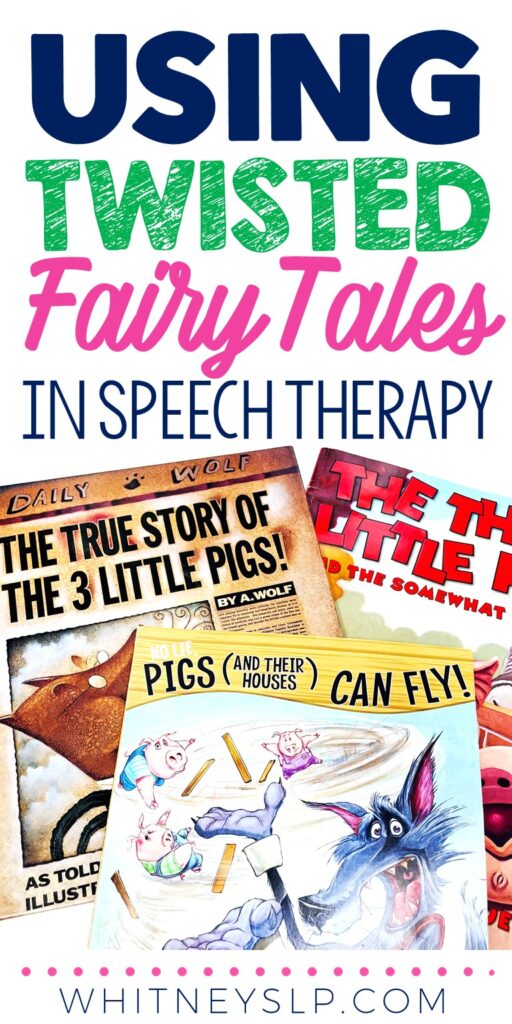If you’re doing a fairy tale theme, you may want to consider using twisted fairy tales in speech therapy. I happened upon a twisted version of The Three Little Pigs several years ago, and I decided to read it to one of my 2nd grade therapy groups. It was one of the most engaging therapy sessions I had ever had with them!
They were literally on the edge of their seats with anticipation of what would happen next in the story. Plus, they were wondering how it would differ from the traditional Three Little Pigs Story they knew so well. After the book was over, we had the best discussion on whether they thought the wolf was telling the truth or not. After that therapy session, I was hooked on twisted fairy tales, and have been using them ever since!
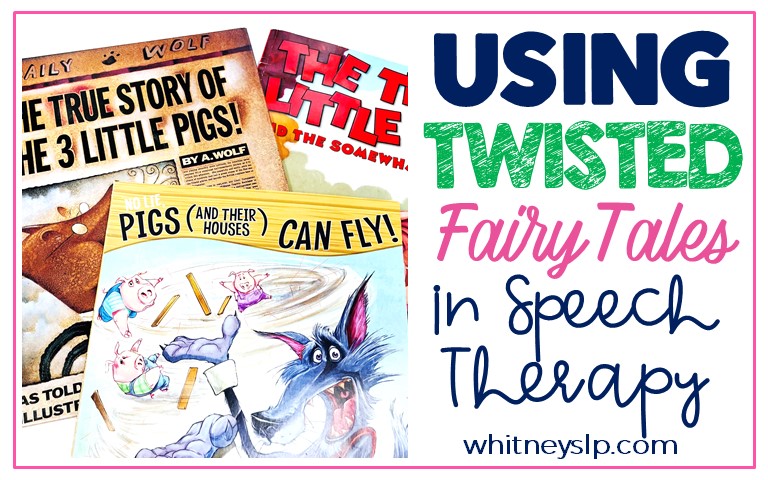
If you’ve never heard of a Twisted Fairy Tale, let me introduce you to a fantastic concept for therapy! Twisted Fairy Tales are a new spin on a classic Fairy Tale, usually told by the original protagonist’s point of view. For instance, in the case of the Three Little Pigs, the twisted versions are usually told by the Wolf, who in one way or another, claims he is innocent and nice, and was either grossly misunderstood, or the pigs are really the rotten ones!
Following are some of the concepts I target while using twisted fairy tales in speech therapy:
Prediction:
While not every student on your caseload has heard of each of the fairy tales you might be using, many of them have. If you have students who are unfamiliar with the classic version of the story you’re using, you should definitely start there, first. Many times, depending on the age group, I read the classic version first anyway, just as a refresher. Then, before I read the twisted version, I tell the students that this book has the same characters as the classic version, but it’s told by someone else, and therefore going to be a little different than the story they’ve heard before. I ask them what they think the story teller is going to say. And then as I read the book, I stop throughout, and ask them to predict what they think will happen next.
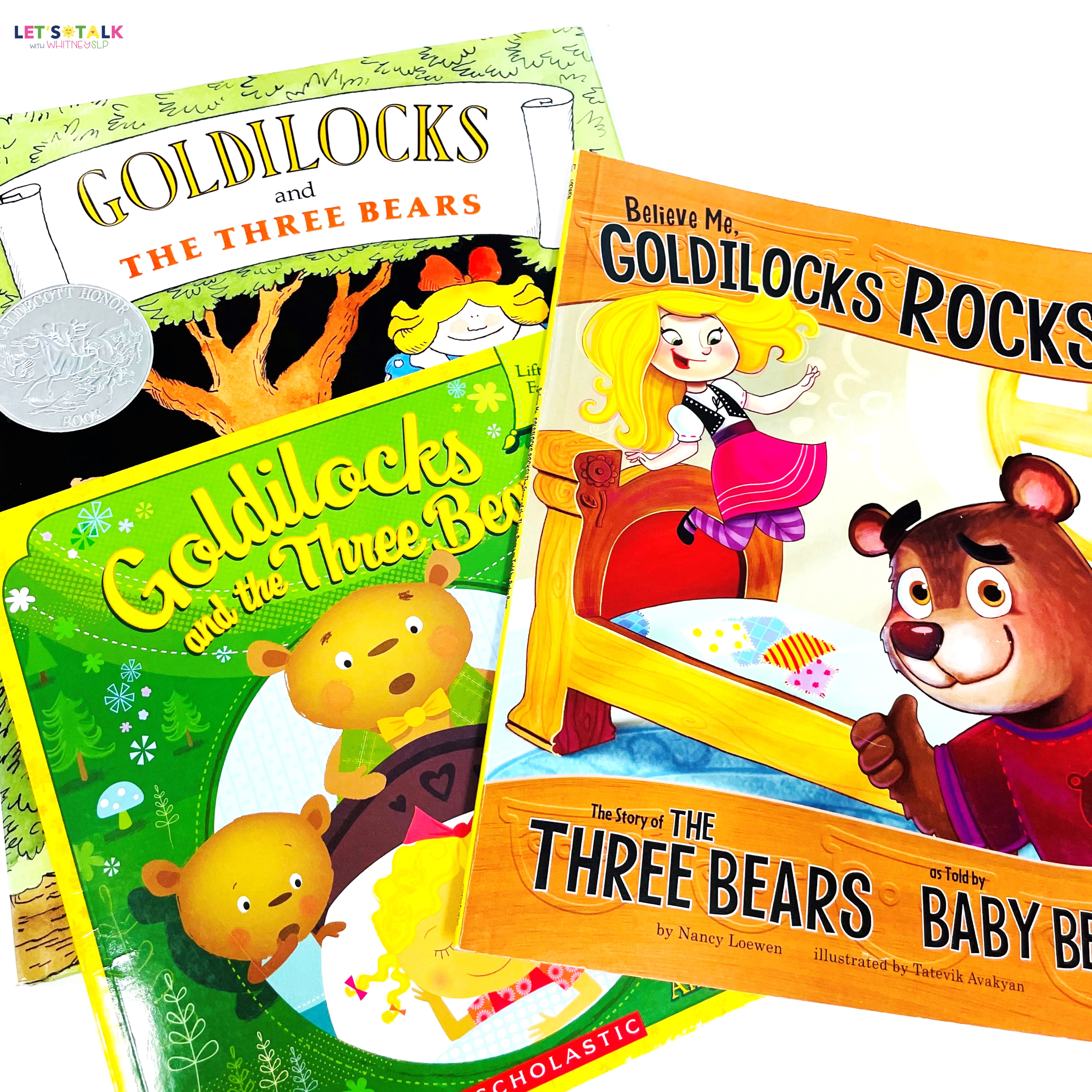
Comprehension/Sequencing/Vocabulary
Just as in all books, I’m constantly teaching and assessing comprehension, sequencing, and vocabulary. This is no different for twisted fairy tales. I use book companions to do this, which makes it much easier since the materials and visuals are already prepped and ready to go. We also target additional language concepts, such as basic concepts, following directions, same/different, repeating sentences, and more.
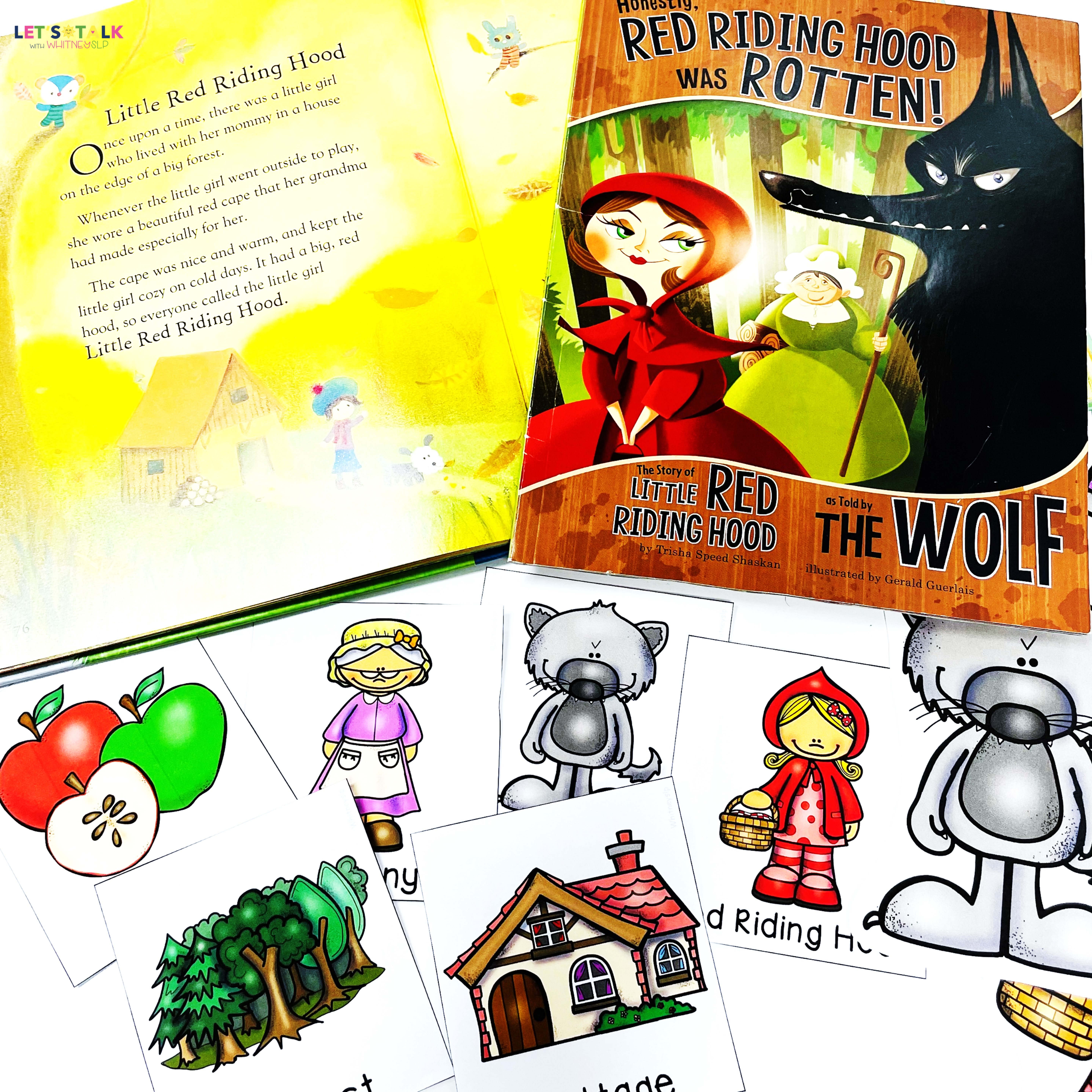
Story Elements and Story Retell
Similar to all books I use, you can use twisted fairy tales to teach story elements and story retell. In fact, I love using twisted fairy tales to target higher-level concepts, such as points of view, conflict resolution, and cause and effect. Twisted Fairy Tales are a great way to really assess whether your students have specific story elements down pat, because they are slightly different than the original versions, and therefore, the story retell is going to be different.
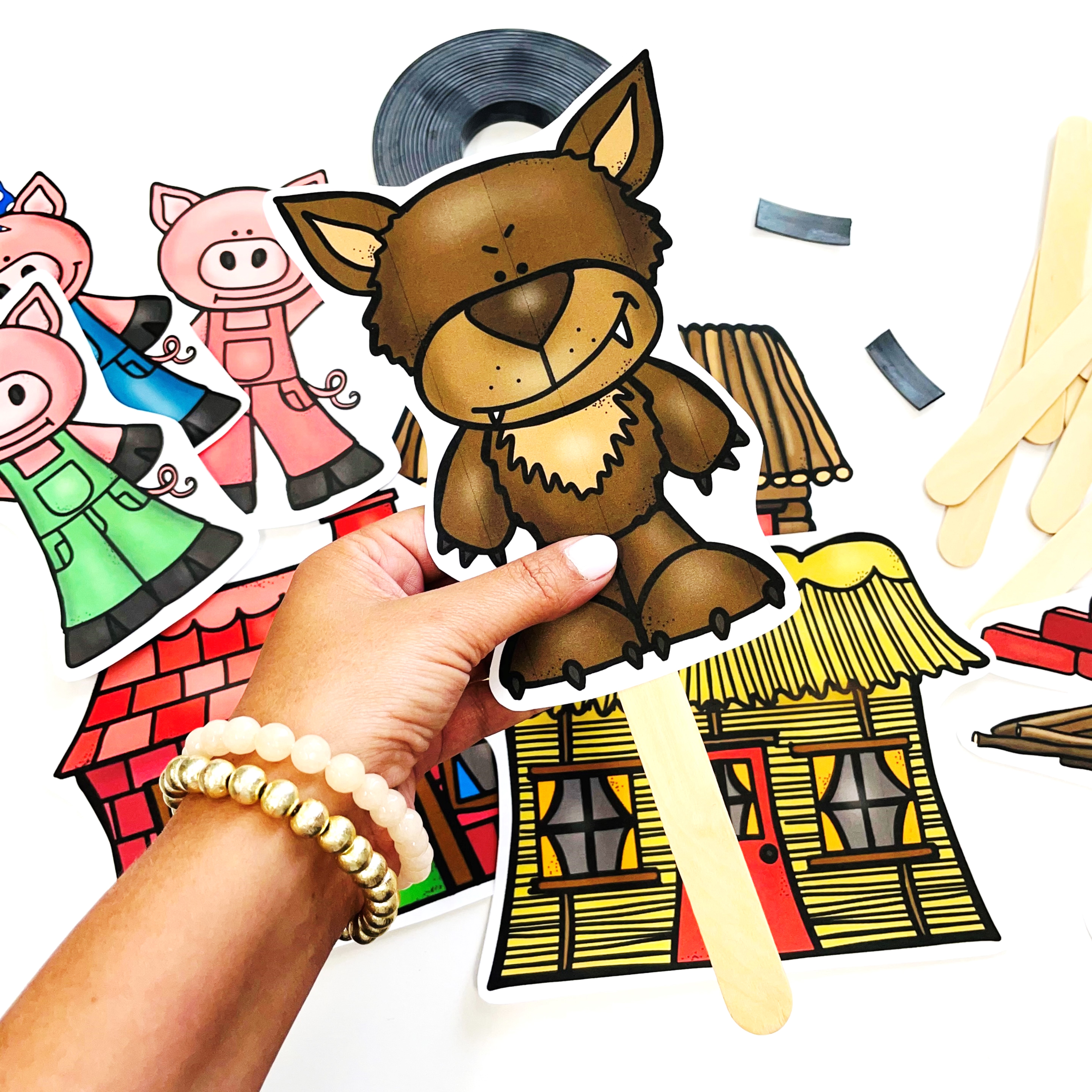
Points of View
Twisted fairy tales are an excellent way to teach differing points of view or perspectives. I usually start by asking my students if they can recall a time when they were telling their mom or teacher about someone doing something wrong, and the person they were telling on told the story completely differently than they did, whether to avoid getting into trouble, or for whatever reason. Almost all of my students can recall a time when this has happened to them. I explain that that is because each one of them had a different point of view, or version of what happened (whether truthful or not).
Twisted Fairy Tales are the same way. The conflict in the story changes based on who is telling the story. The fun part (in Twisted Fairy Tales, not in real life), is trying to decipher or debate on which version of the story is the correct one! (Or are both versions correct/incorrect?)
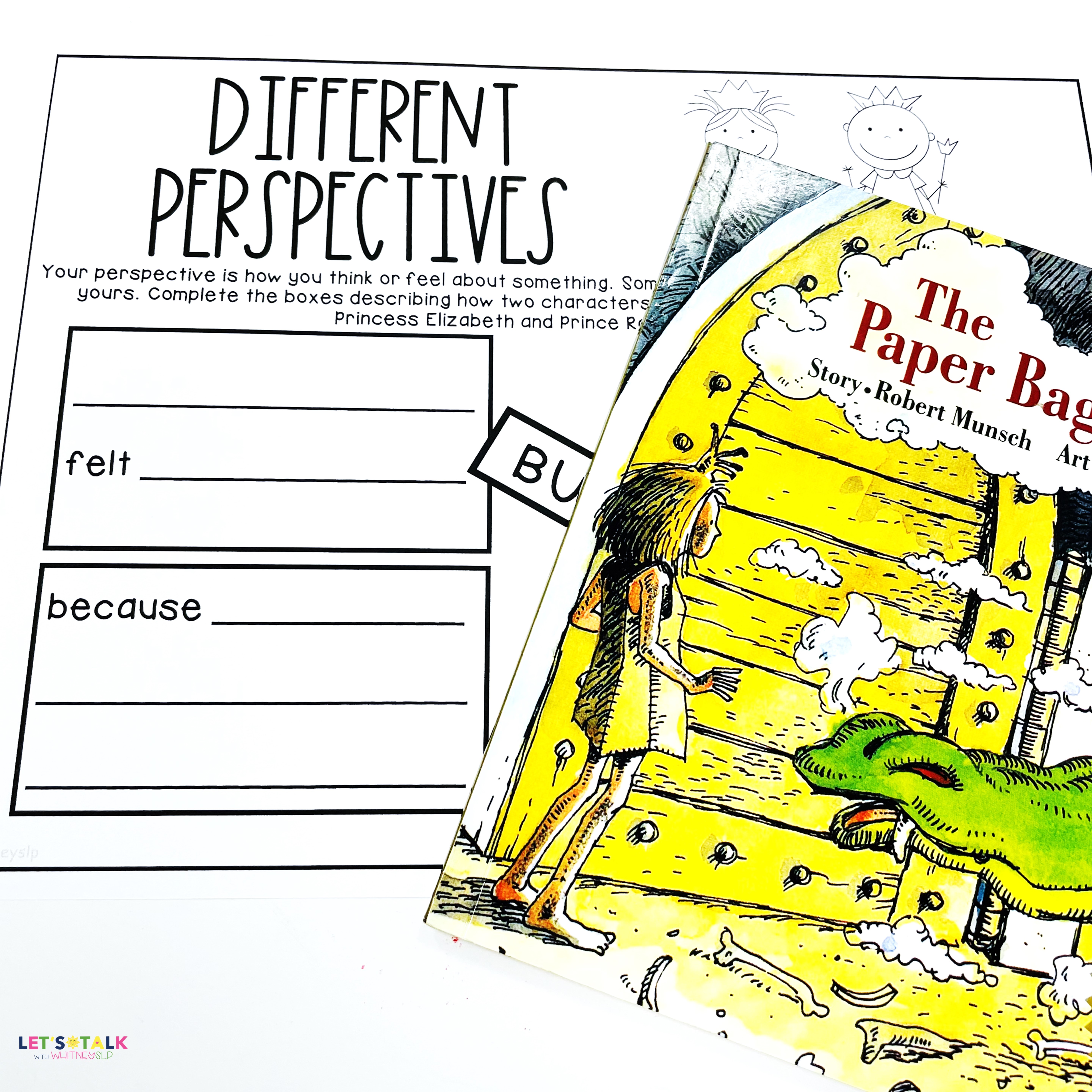
Conflict and Conflict Resolution
All fairy tales have some sort of conflict, and twisted fairy tales are no different. The difference in twisted fairy tales is that there are differences of opinions on who caused the conflict, who’s fault it was, how the conflict was resolved, etc. This allows for a fun debate between your students!
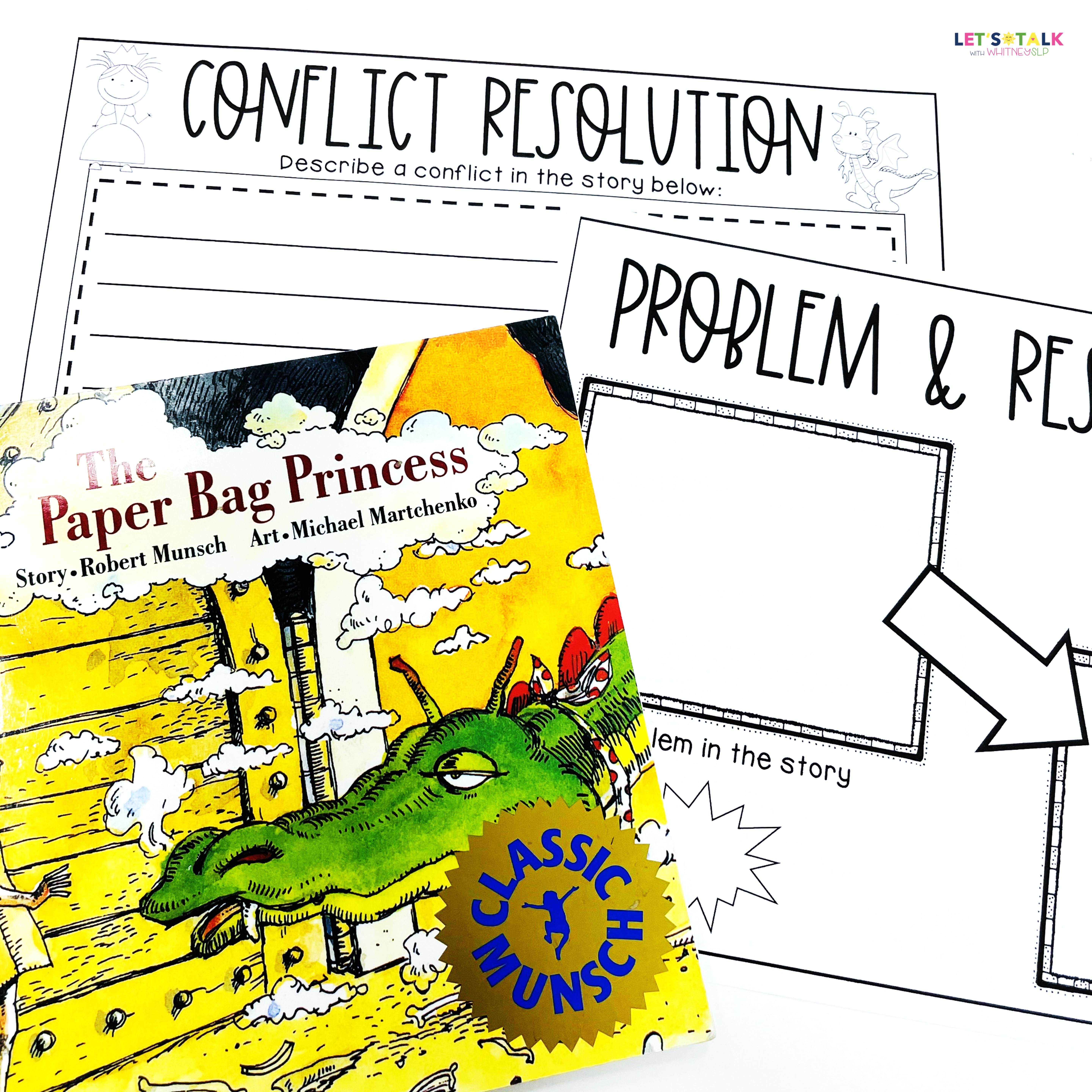
Cause and Effect
Our actions have consequences. We teach this concept many times with children in terms of their own behavior. But do you ever explicitly teach it about characters in a story? I like to have students point out consequences in the form of cause and effect in stories. What caused this to happen? And what effect did it have on the main character? On the entire story? This is especially evident when teaching the moral or lesson of the story. What did the first two pigs learn about being lazy? Did the three bears learn anything about leaving their house unlocked? What did Red Riding Hood learn about diverting from the path? What did Prince Ronald learn about having a rude attitude? All fairy tales have causes and effects…and the twisted versions are even more fun to discover and discuss!
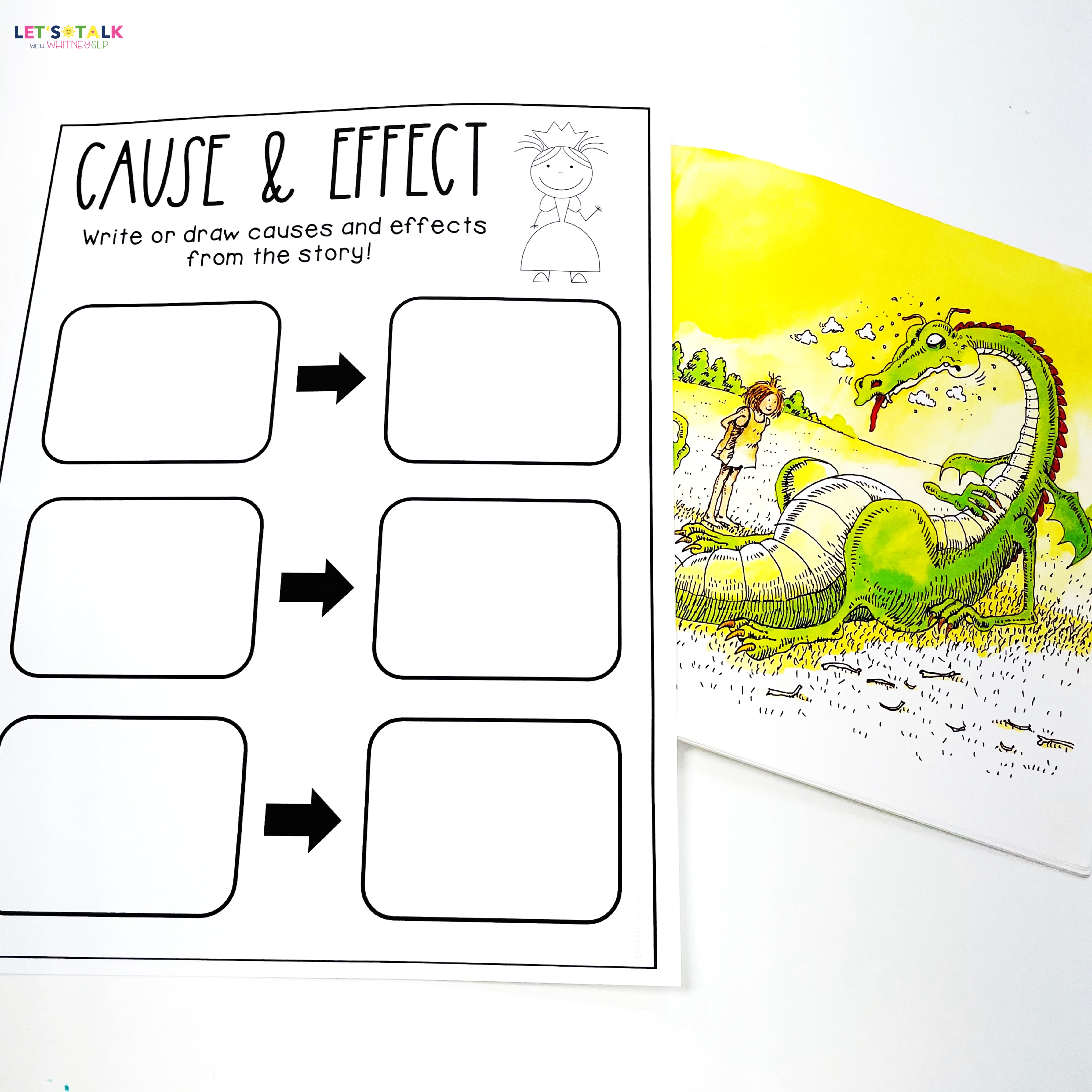
Comparing and Contrasting
Comparing and contrasting is something we discuss in almost all of our book studies. However, it’s easy to work on comparing and contrasting with twisted fairy tales, because there are so many similarities and differences. Compare and contrast not only the characters, but the entire story: the beginning, the middle, and the end! In addition to twisted fairy tales, you can also compare and contrast different versions of the classic stories, or stories with similar plots but different characters!
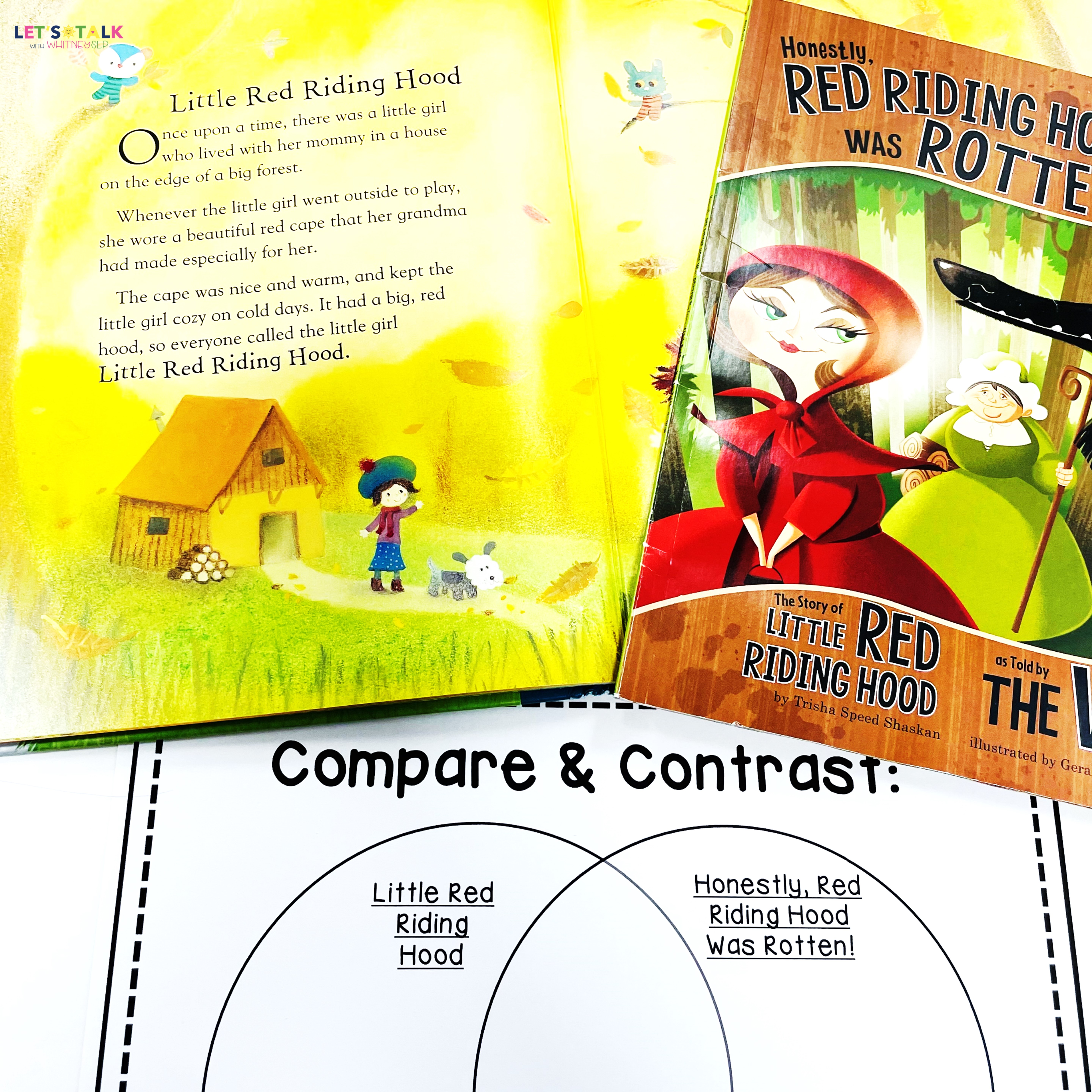
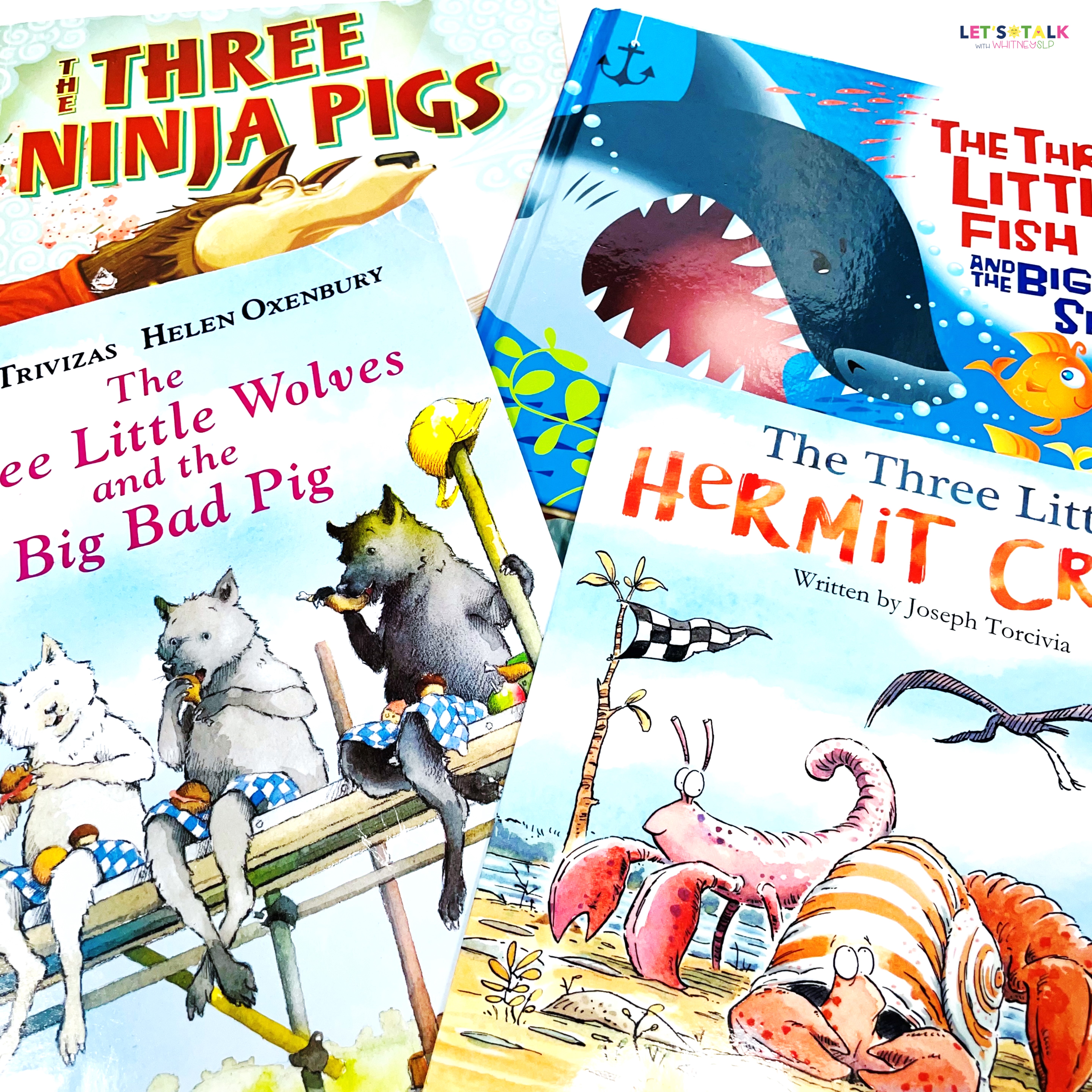
Writing: Fact vs. Opinion and Persuasion
Do you work on writing in therapy? I love using short writing prompts following short stories to work on opinion and persuasive writing! With twisted fairy tales, you can use writing prompts such as asking students which version of the story they like better, which version they find more truthful, and so much more, and having them justify their answer(s).
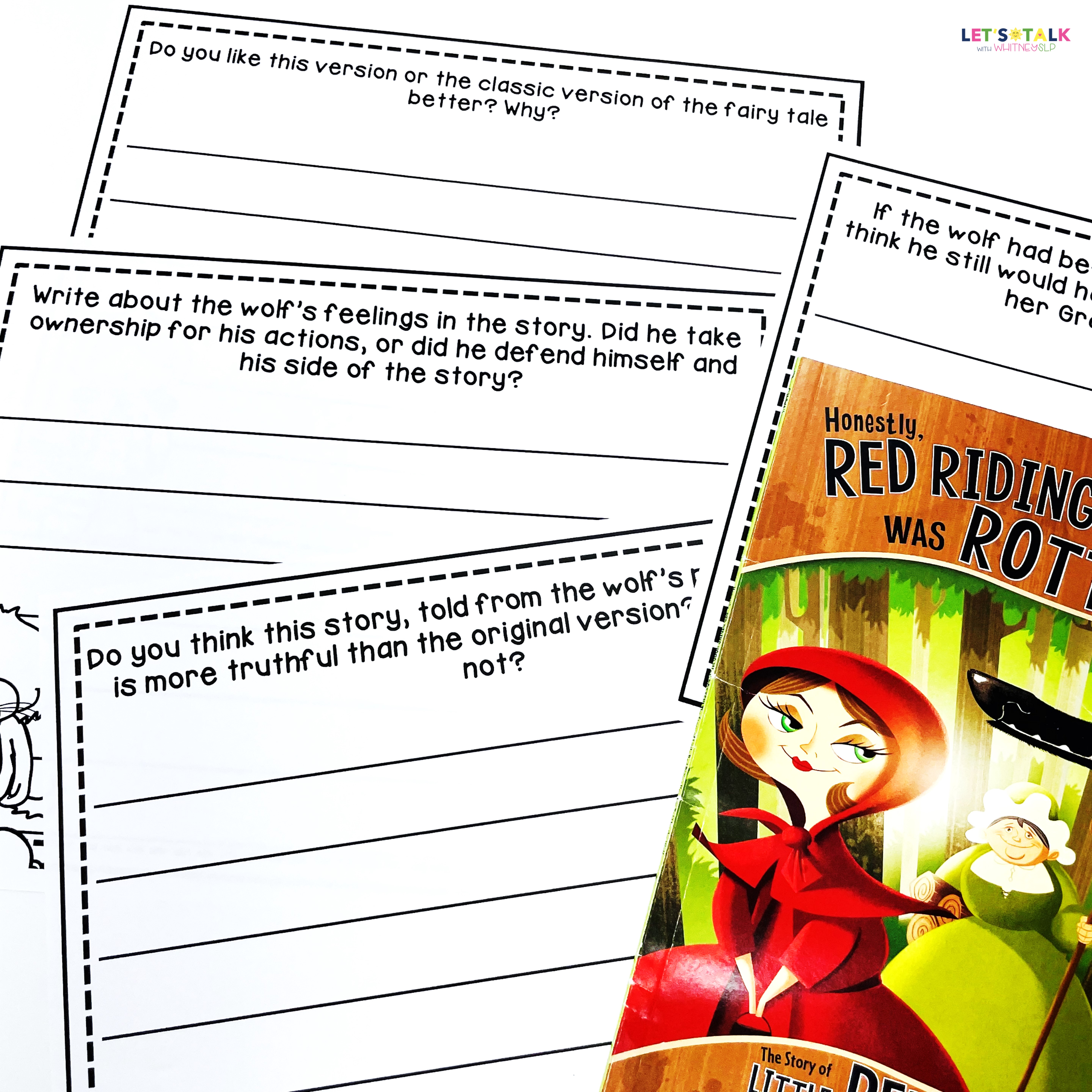
So have I convinced you about using twisted fairy tales in speech therapy? If you’re looking for materials for Twisted Fairy Tales, you may want to check out this complete Twisted Fairy Tale BUNDLE! They’re based on the Twisted Fairy Tales found HERE.
I hope this helps you with your planning if you’re using Twisted Fairy Tale activities in speech therapy! Fairy Tales are so fun! What other twisted fairy tale activities do you use? If you’re looking for more Fairy Tale ideas, be sure to check out the following posts:
Fairy Tale Activities for Speech Therapy
Fairy Tale Books for Speech Therapy
Three Little Pigs Activities for Speech Therapy
Three Little Pigs Books for Speech Therapy
Dragon Books for Speech Therapy

